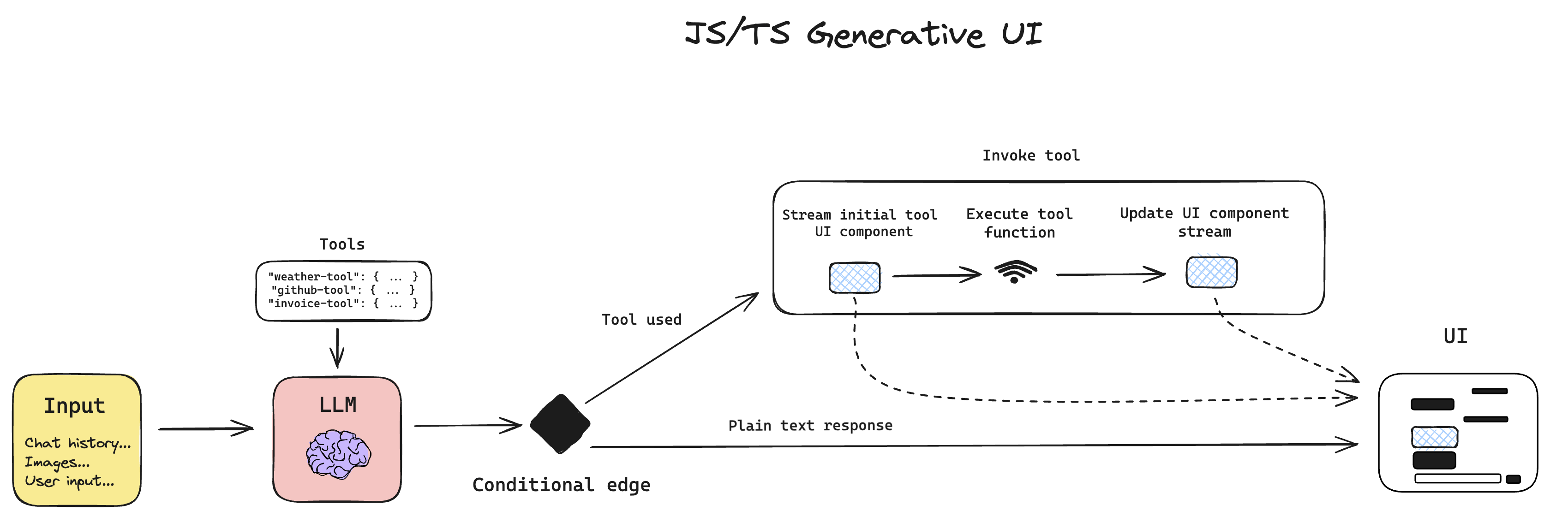This application aims to provide a template for building generative UI applications with LangChain.js. It comes pre-built with a few UI features which you can use to play about with gen ui. The UI components are built using Shadcn.
First, clone the repository and install dependencies:
git clone https://github.com/bracesproul/gen-ui.git
cd gen-ui
yarn installNext, if you plan on using the existing pre-built UI components, you'll need to set a few environment variables:
Copy the .env.example file to .env:
The OPENAI_API_KEY is required. LangSmith keys are optional, but highly recommended if you plan on developing this application further.
Get your OpenAI API key from the OpenAI dashboard.
Sign up/in to LangSmith and get your API key.
Create a new GitHub PAT (Personal Access Token) with the repo scope.
Create a free Geocode account.
# ------------------LangSmith tracing------------------
LANGCHAIN_API_KEY=...
LANGCHAIN_CALLBACKS_BACKGROUND=true
LANGCHAIN_TRACING_V2=true
# -----------------------------------------------------
GITHUB_TOKEN=...
OPENAI_API_KEY=...
GEOCODE_API_KEY=...
FIRECRAWL_API_KEY=...To run the application in development mode run:
yarn devThis will start the application on http://localhost:3000.
To run in production mode:
yarn start
yarn buildIf you're interested in ways to take this demo application further, I'd consider the following:
- Generating entire React components to be rendered, instead of relying on pre-built components. OR: Using the LLM to build custom components using a UI library like Shadcn.
- Multi-tool and component usage. Update the LangGraph agent to call multiple tools, and appending multiple different UI components to the client rendered UI.
- Generative UI outside of the chatbot window. Have the UI dynamically render in different areas on the screen. E.g a dashboard, where the components are dynamically rendered based on the LLMs output.
